Colin Hackworth on his health, Mt Hotham and how he turned Japan into a skier’s paradise
He blazed a trail in the Aussie snowfields before making ski tourism big in Japan. Today visionary businessman Colin Hackworth is not giving up on his legacy – despite a devastating diagnosis.
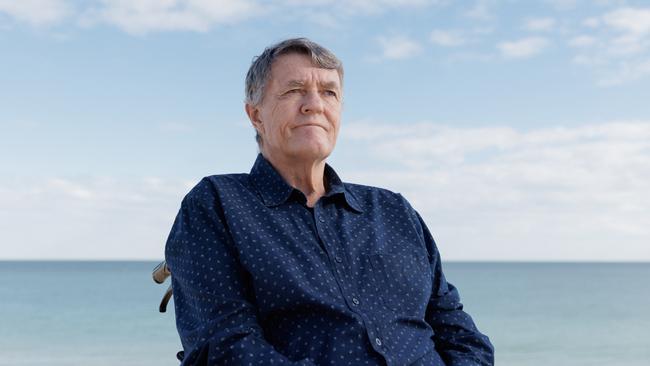
Strapping on a backpack with an avalanche transponder and shovel packed inside, it’s obvious that the skiing on this particular day in Niseko, Japan, will be serious. For Colin Hackworth, who pioneered the Australian market for snow sports in this region, it’s long been a daily routine.
It was Hackworth – former boss of Victorian ski fields Mount Hotham and Falls Creek, those perennial favourites for Aussie skiers for decades – who found in Japan the very thing that can’t be guaranteed back home: great snow, and lots of it. Armed with that discovery, plus an outsized dose of drive, ingenuity and some handy financial backing from one of Hong Kong’s richest men, Richard Li, Hackworth turned a shabby, overlooked Japanese ski area into a chic resort valued at hundreds of millions of dollars. Niseko Hanazono, on Mount Niseko-Annupuri in Hokkaido, the northernmost of Japan’s main islands, is now one of the most acclaimed in the world.
Here on the mountain it’s one chairlift ride, then another … and then at last, a final one. Skis come off and it’s a 1000-step trudge up the mountain to arrive at the summit. Not far away, the imposing Mount Yotei – an extinct volcano – dominates the landscape. On a lucky day, there’s a clear view of the Sea of Japan on one side of Hokkaido and the Pacific Ocean on the other – if you can focus at all after climbing those 1000 steps.
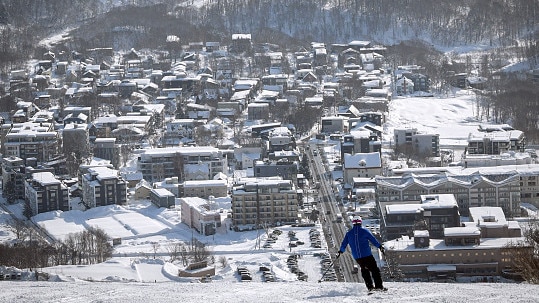
Within no time, skis are back on and it’s a plunge down the backside of the mountain, through thigh-deep fresh powder snow. There are no lifts here. The only way out is to walk, and to shuffle on your skis for around an hour and a half. It is, cold notwithstanding, guaranteed to be sweaty. This is not an exercise for the faint-hearted. The last time we did it – barely 15 months ago – there wasn’t a faint heart in sight. Hackworth, now 66, was among the fittest skiers I have ever known. Years of cutting tracks through the powder, and riding the tightest lines through the trees of Hanazono, had carved him as tight as his turns. His endurance was remarkable.
“Oh, mate, he’s a gun. He’s just a pure gun,” says his ski buddy Aaron Jamieson, a photographer who lives in Niseko. “It doesn’t matter what the snow conditions are, Colin skis the mountain the way he skis. He’s a pure skier.”
No part of the planet was off-limits to Hackworth. Europe and America were no-brainers. He had been a ski instructor there. But really anywhere there was adventure. Russia, in Siberia, heli-skiing using old military Sikorsky choppers. Why not? In any year, he spent more than half his time in the cold.
But now those moments seem frozen in time, and there’s a different demand on his fitness. An uninvited adventure has taken hold of Colin Hackworth’s life: he is battling the terribly rapid onset of motor neurone disease. Known, until now, to few people apart from his family and closest friends, the body that once carried him effortlessly around the world’s most difficult ski slopes has let him down.

It started innocuously. A year ago he was playing in a golf tournament in Japan. On the final day of the event, a finger on his left hand went numb. He thought it was a nerve thing.
Hackworth now has very limited use of both arms. His speech is difficult to understand. And his mobility is going fast. His wife Michelle, now his carer, understands him best and translates for him, so quickly has this insidious disease grabbed hold, barely nine months since being diagnosed in October last year.
“Life in the main, it’s amazing how sweet it is,” Michelle says. “We’ve been together for 24 years. We don’t always need words anymore.”
Not that the disease stopped Hackworth, initially. With one useful arm, he kept skiing until early this year. His daughters would do up his jacket and his boots. And off he’d go again. At home on the snow. Until he crashed and busted his shoulder early this year. Colin never crashed, until then. And that was it.
The body might not be doing what it once could … but the brain? It’s working overtime – as it always has.
Michelle is realistic about the challenges ahead for the whole family.
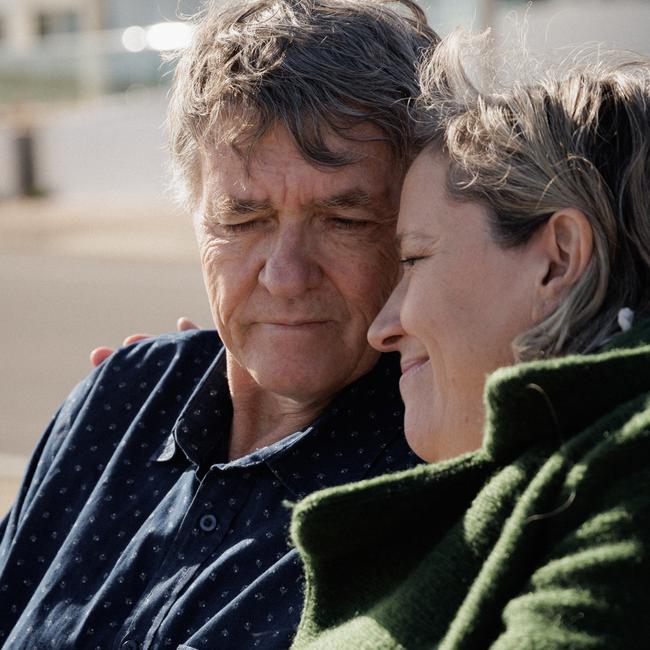
Motor neurone disease is the most common form of amyotrophic lateral sclerosis, also known as Lou Gehrig’s disease. More than 2,000 people in Australia have it at any one time. The average life expectancy is just two and a half years. “Some people [with the disease] are cognitively impaired, but not everybody,” Michelle says. “The really difficult thing for people like Colin is … you’re still fully brain-aware, but your body’s letting you down.”
Keeping that brain active, and with Michelle alongside, Hackworth is devising a business plan for a giant extension of the Hanazono ski resort, worth tens of millions of dollars. He is planning ski lifts that he may never ride.
At the same time, he is in Adelaide on a medical trial for a new drug called SPG302. “Colin is not someone who looks back with regret at anything,” Michelle says. “He’s always looking forward and is accepting, in a way, about what you can’t change.”
It’s such a cruel state of affairs for a man whose life has been all about change.
Hackworth, who was born in Adelaide, and studied economics at university, was accepted as a graduate trainee at the Ford Motor Company in Melbourne at age 21. But a first trip to the mountains in 1980 changed his destiny. He was immediately hooked by the ski life and determined he would spend as much time in the snow as possible. He chucked in the job at Ford to – initially – wash dishes at Mount Hotham, while training to be a ski instructor. Honestly, he was a ski-bum. But a ski-bum with ambition. “I learned quickly the best way to get free skiing was to run the resort,” he tells me when I travel to Adelaide to speak with him for this article.
Upon graduating as a ski instructor he chased ski seasons around the world: at Oberndorf and Kirchbach in Austria, where he had to learn and to speak German, then to Vail and Aspen in America. (When, years later, Hackworth’s daughter Bella decided to defer uni to become a ski instructor, he wasn’t too pleased. “It was like hell froze,” she says. “I don’t think he talked to me for a couple of weeks. I had to promise and swear on my life that I was going to go back to uni the following semester.”)
There was a moment for Hackworth when his supposed business destiny threatened to derail his ski career. In the mid-1980s, his father – who owned the Adelaide Wool Company – passed away. For a time, Hackworth ran the family business while working at the Hotham ski school. To improve the wool company’s efficiency, he learned how to code a computer – so he could spend more time away.
Something, though, had to give. He walked away and, eventually, the family business was sold. The snow was his priority.
He would rise to become general manager of Mount Hotham and later the Falls Creek resort. His ambition was matched by a super fund, BCR Asset Management, which put capital into the resorts, installed new chairlifts and opened up new ski areas. Together they lobbied, then constructed, the first and only High Country airport, at Dinner Plain.
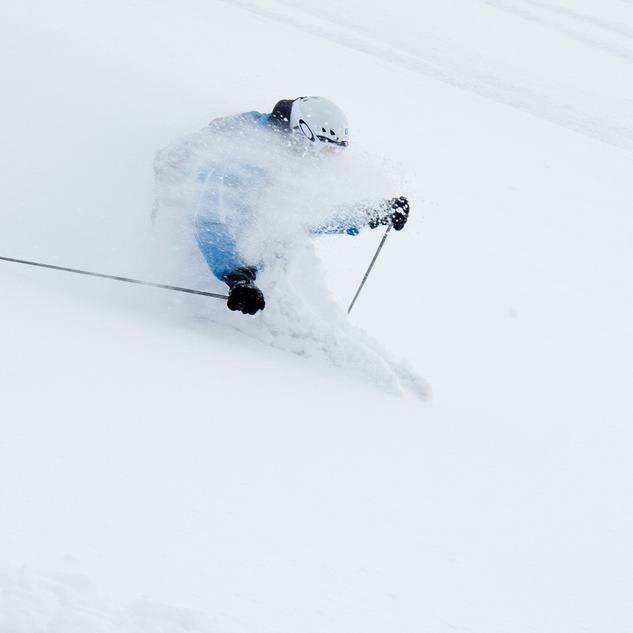
There were obvious challenges. His long-time friend, radio broadcaster Steve Price, recalls the time Hackworth decided it would be a good idea to have the 3AW Drive program do the show from Mount Hotham to promote the new airport. “It was the first commercial flight into Hotham via Qantas. The only problem was that the pilot tried to land three times, but the weather was so bad he couldn’t get the thing on the ground,” says Price. “He was in contact with Colin by phone and, at one point, we were going to divert to Albury. Colin quickly hired a helicopter to fly me from Albury to get on air at four o’clock. But suddenly the sun broke through, the clouds parted, and the pilot jammed this thing down on the ground. Colin was on the tarmac praying the plane would land, because the whole show was due to promote the fact that you could fly from Melbourne and Sydney to Mount Hotham. The problem was, the first flight nearly didn’t make it.”
It’s a tale that tells you a fair bit about the precarious world that Australian ski operators navigate. As well as running Hotham and Falls Creek, Hackworth was chief executive of the Australian Ski Areas Association, the peak ski industry body, for 20 years. For Australian ski operators, the battle is always climate and capital. Will there be enough snow to justify spending on the resorts?
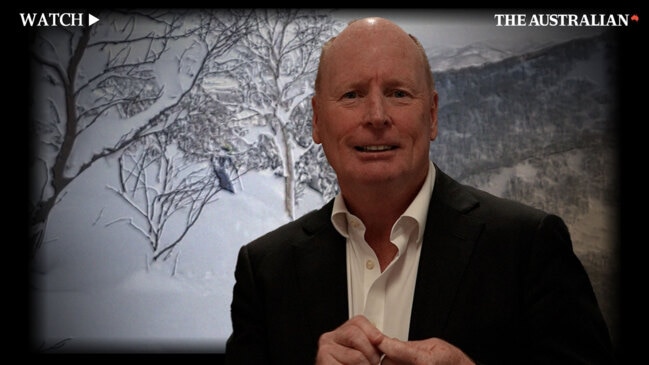
Belinda Trembath started out as an assistant ski instructor at Hotham while she was at university. She wanted to chuck uni in, but Hackworth convinced her to stick it out. He later hired her to run marketing at Hotham.
Trembath replaced Hackworth as Hotham’s general manager when he went to Japan. Today she is vice president and chief operating officer of Whistler-Blackcomb, one of the biggest ski resorts on the planet. But she remembers her early seasons at Mount Hotham, when there was little snow. That meant no skiers to instruct. “We were still running the Heavenly Valley quad [chairlift], so we hiked the mogul course and then walked down over the mud and slush to reach the load station,” she recalls. Hackworth, as general manager, ended up spending a lot of time and money setting up snow-making machines, which changed the economics of Australia’s ski fields. That is another clue as to his vision for ski resorts.
When Hackworth arrived in Japan, those problems disappeared. Snow was a surety. And the capital? We’ll get to that.
It was on his first visit to the Niseko region in 2003 that a light bulb went off. “When the icy air from the Russian Arctic meets the moisture from the Sea of Japan … it creates the perfect powder snow,” he tells me, not for the first time. Niseko is where a lot of it lands. Last season, 17metres of snow fell there.
Trembath was on that first trip. “We did a lot of research on Niseko, and I remember at the time thinking maybe the owners of the Japanese resorts might like to purchase a couple of Australian resorts. In fact, it was the opposite.”
What Hackworth discovered, in Niseko, was not only remarkable ski conditions but buildings that were, by Australian standards, astonishingly cheap. For example, a four-storey commercial building on the main intersection of Kutchan, the country town abutting the Niseko ski area, was for sale for $150,000. Ski villas and old houses in the village of Hirafu were similarly priced. Ski resorts were also cheap.

Japan, at the time, was in the midst of a long-term economic downturn; its ageing population and high government debt meant the country’s economy was stuck. (You could argue, it still is). The booming ’80s – when Japanese businesses invested heavily in Australia, only to be burnt by the 1990s recession – were long gone.
Hackworth and Trembath discovered that the smaller resort of the four that make up the Niseko region – Hanazono – was for sale. It was owned by the Japanese railway and hotel conglomerate Tokyu. Although “resort” is probably a generous description of Hanazono in those days. It had three ageing chairlifts and a few corrugated iron sheds. The best feature of the place, apart from the snow, was the 100 yen ($10) crab ramen for lunch in one of those sheds.
Helping them on that first trip was another long-time friend, Jason King, who ran Ski Japan at the time, when he was not in charge of the volunteer ski patrol at Thredbo during our winter. King recalls: “I first met him on the bus coming from the airport to the resort. We had a ski together a couple of days later. Afterwards, I ran into him on the street, and he said: ‘I’m going to go and talk to the ski resort, to Tokyu, about buying Hanazono’ and I thought to myself: ‘Well, that’s a pretty bold move’.”
As part of the Japanese Government’s repeated attempts to stimulate its economy, it encouraged conglomerates like Tokyu to sell off their assets. So the resort was going cheap. The deal included all the ski runs, the equipment and all of the associated land (hectares of which had existing zoning for hotels and condominiums). And already installed were all the paved roads and guttering; all the water, power, underground phone lines and sewerage. The price for all of it? A steal at $2 million.
Today that would buy a modest home in most Australian capital cities. Even back in 2003, it was obviously a bargain. Even so, Hackworth didn’t have $2 million. He needed capital. The owner of Falls and Hotham knocked back the offer, despite having sent Hackworth and Trembath over to scout opportunities. Enter Roger Donazzan, a Melbourne lawyer who was married to then Qantas chair Margaret Jackson. Hackworth introduced them to skiing in Japan, then planted the idea that Hanazono was for sale. Donazzan could see a deal, but was nervous. “I said to Colin, ‘If this goes belly up can we sell the plant and equipment: the ski caterpillars and ski grooming machines … and the chairlifts?’ Colin said, ‘Oh yeah, these things get sold all around the world. I’ll come back to you tomorrow’.”
The next day he had his answer – the plant and equipment alone was worth more than $US5 million. Other backers were found, including Peter Allen, then chief financial officer of the Westfield Group.
Before the deal went through, Tokyu – the Japanese seller – sent senior representatives to Mount Hotham and Falls Creek to establish Hackworth’s credentials as a ski area operator. He passed the test.
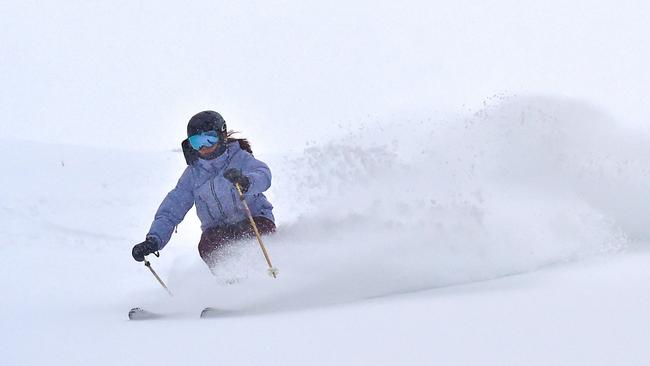
There was another potential deal-breaker just before the sale went through. Tokyu approached Hackworth and insisted he buy the resort’s golf course as well. Already strapped for cash, he was worried – until he found out the price: one Japanese yen, or about one cent, for an 18-hole course with magnificent scenery, a perfectly maintained course, a clubhouse with a restaurant and Japanese onsens (bath houses) that would not be out of place at a top 10 golf club anywhere in the world. The watering system would have been worth more than the entire sum Hackworth and his backers were putting up for the resort.
Even so, they prudently rejected the one yen offer “because it was losing money”, Hackworth recalls. Tokyu was insistent and eventually a five-year sale and leaseback arrangement was struck – with the Japanese company effectively underwriting the losses. Hackworth tells me the golf course still loses money but the rest of the resort more than covers the losses.
As for Tokyu, its strategy was to inject energy and knowledge into one ski resort so that the other three in the vicinity could benefit. It’s worth bearing in mind the Japanese economy was at rock bottom back then. Lots of hotels and resorts were being given away to people brave or foolhardy enough to buy them.
“It was struggle-town,” says another of Colin’s ski buddies, Simon Robinson, founder of the Hokkaido Tracks property development company. “The place was deeply failing when Colin, myself and others came into town. But the snow, of course, was not failing.”
It is sometimes said that migrants see things that locals take for granted. It’s the reason the list of the wealthiest Australians is so heavily populated with first- or second-generation immigrants. The same was true in Japan at this time, when it came to powder snow. It was there, in abundance, but the Japanese skiers did not use it. They stuck to the groomed slopes. It took the Aussies to recognise it.
Robinson recalls: “It’s unbelievable, but they only skied on piste in those days. Backcountry skiing was almost unheard of in Japan. So they would all come up here and go carving up and down the piste. A metre either side, there was perfect powder.”
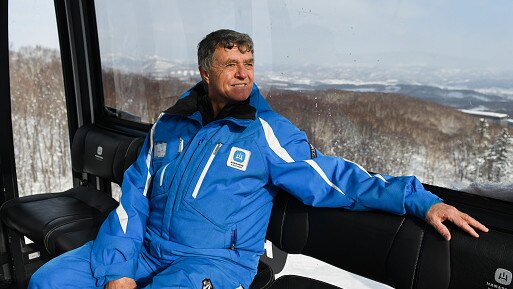
Hackworth introduced Australian ski initiatives into the Japanese resort, including a family-friendly ski school and good ski hire. He started hosting cocktail parties for visiting Australians mainly. At those parties, often at his and Michelle’s house in Hirafu, billionaires would rub shoulders with tow-lift operators. They entertained Japanese, Australians, Americans … and sold the dream. Hackworth’s story was consistent. Hanazono, one day, would be one of the best resorts on the globe, he said. Australian and Asian skiers would not need to travel to the US or Europe to experience the world’s best skiing. The message was straightforward: the powder snow in Niseko was more reliable than at any other resort on Earth.
Says Hackworth’s daughter Claudia: “I guess growing up you sometimes, as a teenager, rolled your eyes … But it’s amazing, the people I crossed paths with. Like [TV presenter] Jules Lund on a call the other day, and he’s like, ‘Oh my god, I remember sitting with your dad’s table about 10 years ago’. Or like [fashion designer] Simon Lock. It’s just wild these people crossed our lives. Dad did bring us on for the ride.”
And there was another remarkable part of Hackworth’s sales spiel. He would thrill visitors with a story that one day Japan’s famous bullet train would stop at Kutchan station, less than 4km from the base of the Hanazono resort. It would provide direct access to nearby Sapporo – or even to Tokyo. Bear in mind, this was 2005, and might have seemed pie-in-the-sky stuff. But Japanese infrastructure is so well planned – in advance – that the bullet train is indeed scheduled to run through Kutchan by 2031.
Australians bought into the Japanese ski story. Hackworth may not have been the very first to discover the area, but he was a catalyst for the Niseko region to become “overrun by Aussies” as some sites described it. It could also be argued that skiing allowed Australians to understand the potential of Japanese tourism. In 2007-2008, as Hackworth was starting his project, 145,400 Aussies visited Japan. In the past year to April, 658,880 of us visited there. The weak yen helps affordability, but Japan is now our third most visited tourist destination.
There’s another twist in the story. Property prices began to rise as the Aussies caused a boom of the sort Japan had not really experienced in almost 15 years. This caught the eye of Prime Minister Shinzo Abe, whose Abe-nomics were all about stimulating the economy. Abe, a keen skier, sought out Niseko, and Hackworth himself, to learn why this part of Japan was growing when every other part of the country was so depressed. Abe – who was assassinated in 2022 – used skiing as a diplomatic opening with then prime minister Malcolm Turnbull in 2017, while also encouraging Aussies to explore other parts of Japan beyond its ski fields.
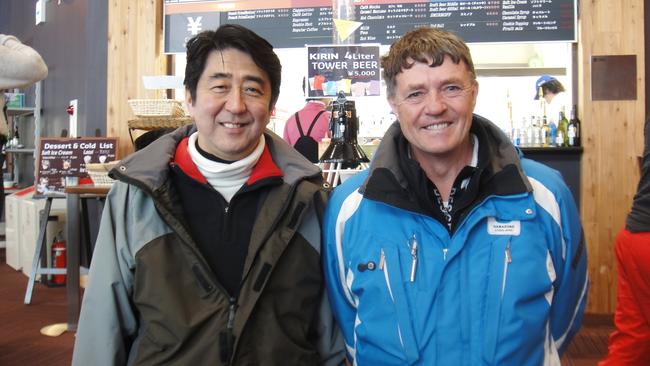
Others were also watching Niseko’s progress. One was devoted skier Richard Li, among Hong Kong’s richest people. Li, the founder of Star TV in Hong Kong, had also bought Cable & Wireless HK through his company Pacific Century CyberWorks. He soon met Hackworth, and his dream. “It came, originally, very unceremoniously, via an agent to a senior real estate executive of mine based in Japan,” Li tells The Weekend Australian Magazine in a rare interview. Soon Li bought out Roger Donazzan and the other seed partners of Hanazono. They did very nicely. The Nihon Harmony Resorts company was bought by Richard Li’s Pacific Century Premium Developments. But the deal had one condition: Hackworth had to stay.
“He is definitely not a person with a huge amount of words. However, he is one whose modest promise has not only come 100 per cent to fruition, but his verbal promises have delivered many times more than what he promised,” Li tells me from Hong Kong.
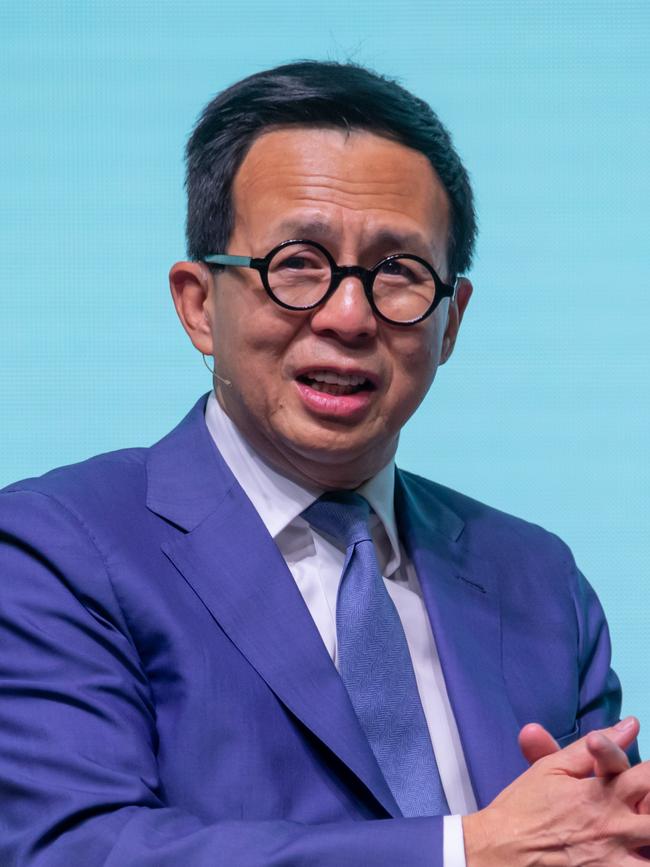
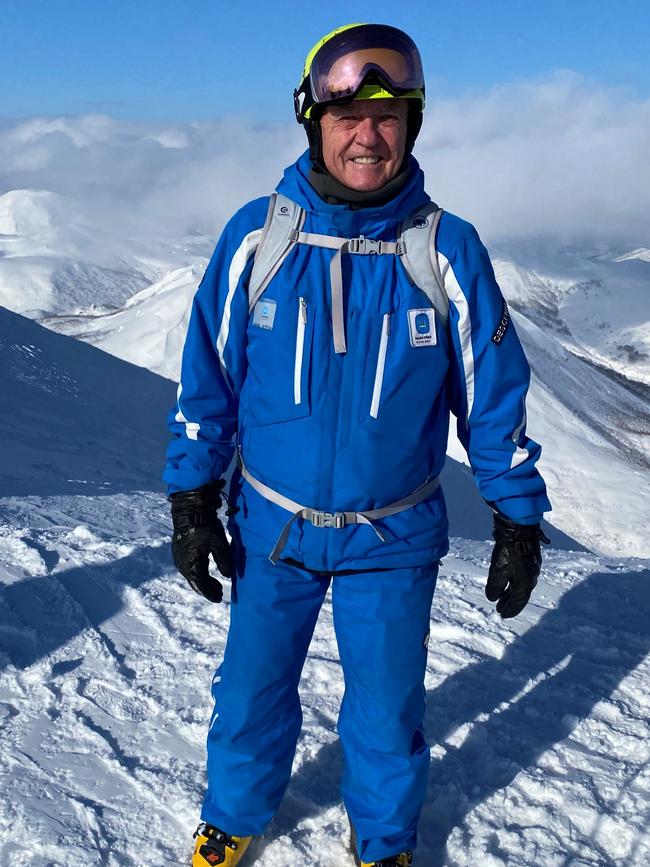
“Whether that’s Aussie, Japanese, Chinese, American, I don’t care what race or culture that person comes from. It is extremely rare to find a person who under-promises and well over-delivers.”
And by pursuing Hackworth’s plan, Hanazono has been transformed. Bloomberg has reported that Li’s company has invested more than $US500 million to develop new chairlifts (many with heated seats) and the Park Hyatt Hotel (with winter nightly prices of $US1200 a room). One other hotel is being built close by, and another is planned, and some of the luxury condominiums on adjoining land will come with potential price-tags of more than $US10 million.
This year the Ski Asia Awards named Hanazono the Best Overall Ski Resort. The Park Hyatt in Hanazono has been a finalist in the World Luxury Hotel awards. It has attracted British artist Bruce Munro to create an astonishing light show. It is all part of the plan to make the resort an all-season attraction.
It’s been 17 years since Richard Li bought into the resort. Throughout this time – and even now as Hackworth battles motor neurone disease – he backed the Australian’s vision. Says Li: “Unequivocally and literally, he is part of the group … he doesn’t opine easily. But when he opines, I listen carefully. There is rarely anyone, professionally or personally, that I admire as much as this man.”

This is why, moored in Adelaide for the drug trial being run by the Southern Adelaide Local Health Network, Hackworth is sticking to his vision; why he is planning ski runs and new ski lifts on the recently purchased Niseko Weiss resort. Why he thinks, one day, the Winter Olympics will be held at Niseko. Why he hopes like hell that the drug trial he is on works. And why he decided to speak for this article – to improve understanding about motor neurone disease. Still, there are so many whys.
“I have always been able to solve any problem,” Hackworth tells me. As he musters the words, his voice betrays the only hint of difficult emotion in our entire interview. “This is the first one I can’t solve.”
Even as he speaks, thousands of Australians will this year plan trips to Japan. Maybe for the summer, or for cherry blossom season; maybe to ski in the winter. Those who make their way to Niseko – and to Hanazono – are likely to ride a chairlift and ski down a run called Colly’s Folly. The recently added intermediate and night-skiing run is named after Hackworth. It says everything about a Japanese dream that turned out to be no folly, after all.



To join the conversation, please log in. Don't have an account? Register
Join the conversation, you are commenting as Logout